The famous painting depicting the "Lamentation of Christ" of 1606 is preserved in precious collections of the National Gallery in London, under the inventory NG29023 reference, and has been disseminated in Europe in particular by engravings: For example, we can mention the one made by Jean-Louis ROULLET (Arles 1645- Paris 1699) and preserved itself in the Art and history of Genève Museum, with inventory number 2013-0804.
(Please check documentation on latest photos of this page.)
Other contemporary copies (from early 17th century) have been painted, which may have come from his own workshop (the works were often made in multiple ones on the same model) or by other copying artists.
The oak panel is carved very faithfully to reproduce the exact details and expressions of the original work.
This scene the Lamentation of Christ depicts a religious thema that was very popular in Baroque Mannerism of this period.
Iconography:
"The drama took place in front of the Grotto of the Tomb where Jesus, about to be buried, and his mother the Virgin Mary, are surrounded by the three Holy Marys: Mary (mother of James), Mary Magdalene and Mary Salome.
TheIconography:
"The drama took place in front of the Grotto of the Tomb where Jesus, about to be buried, and his mother the Virgin Mary, are surrounded by the three Holy Marys: Mary (mother of James), Mary Magdalene and Mary Salome.
The construction of the space of the painting is separated by a 1st long descending diagonal (from left to right) with in the foreground the recumbent body of Christ, resting on the body of Mary, Mother of Jesus, fainting.The latter is herself supported by one of holy women.
The disarray of the 3 holy women creates a contrast with the lifeless body of Christ, and the inertia of the half-fainting Virgin.
While Mary Magdalene's attention is entirely focused on Jesus, the other 2 women are more focused on the Virgin.
Dimensions: 67*59.5cm, and thickness 7cm
43*37cm for artwork
Very nice patina and perfect condition.


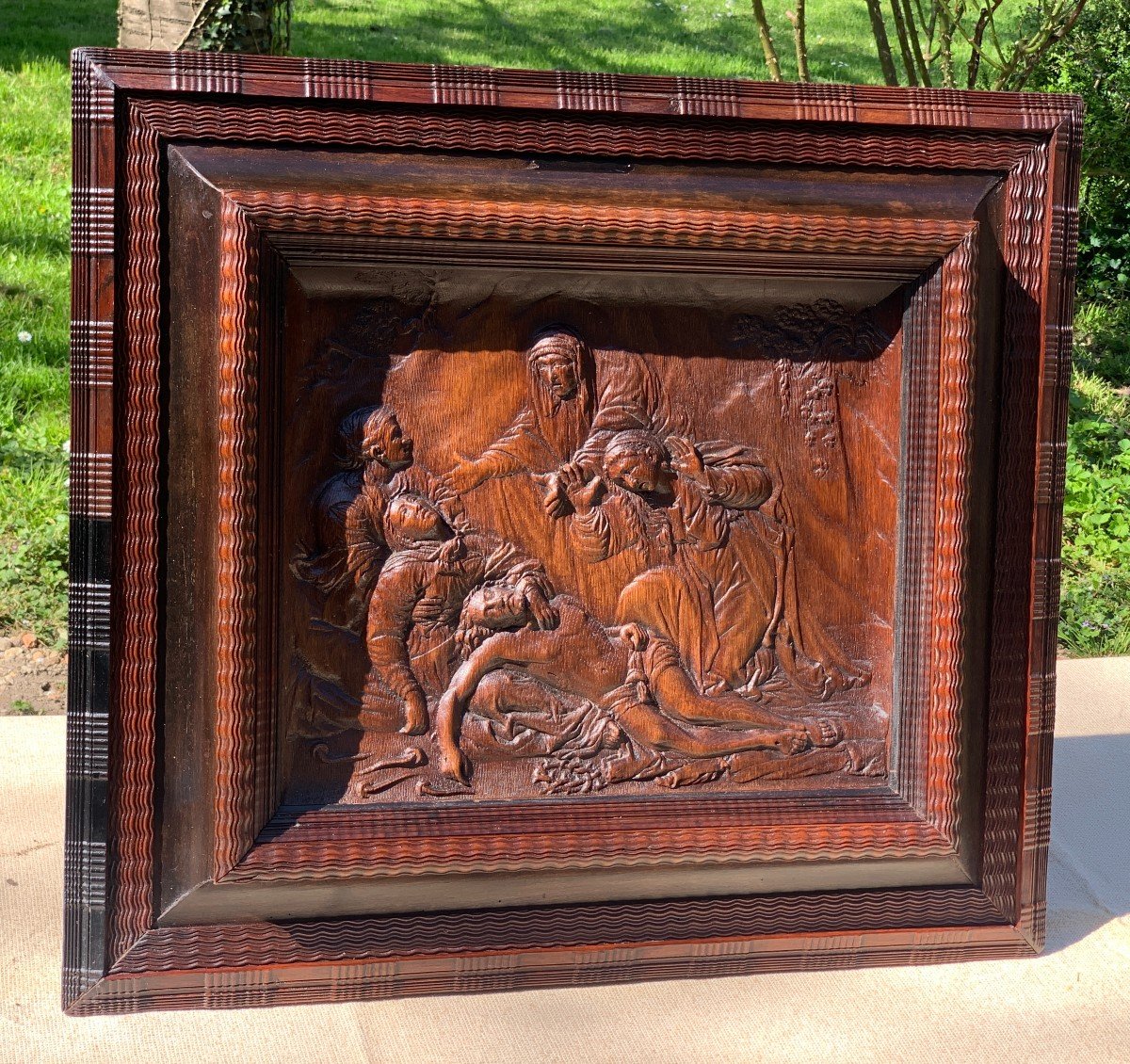
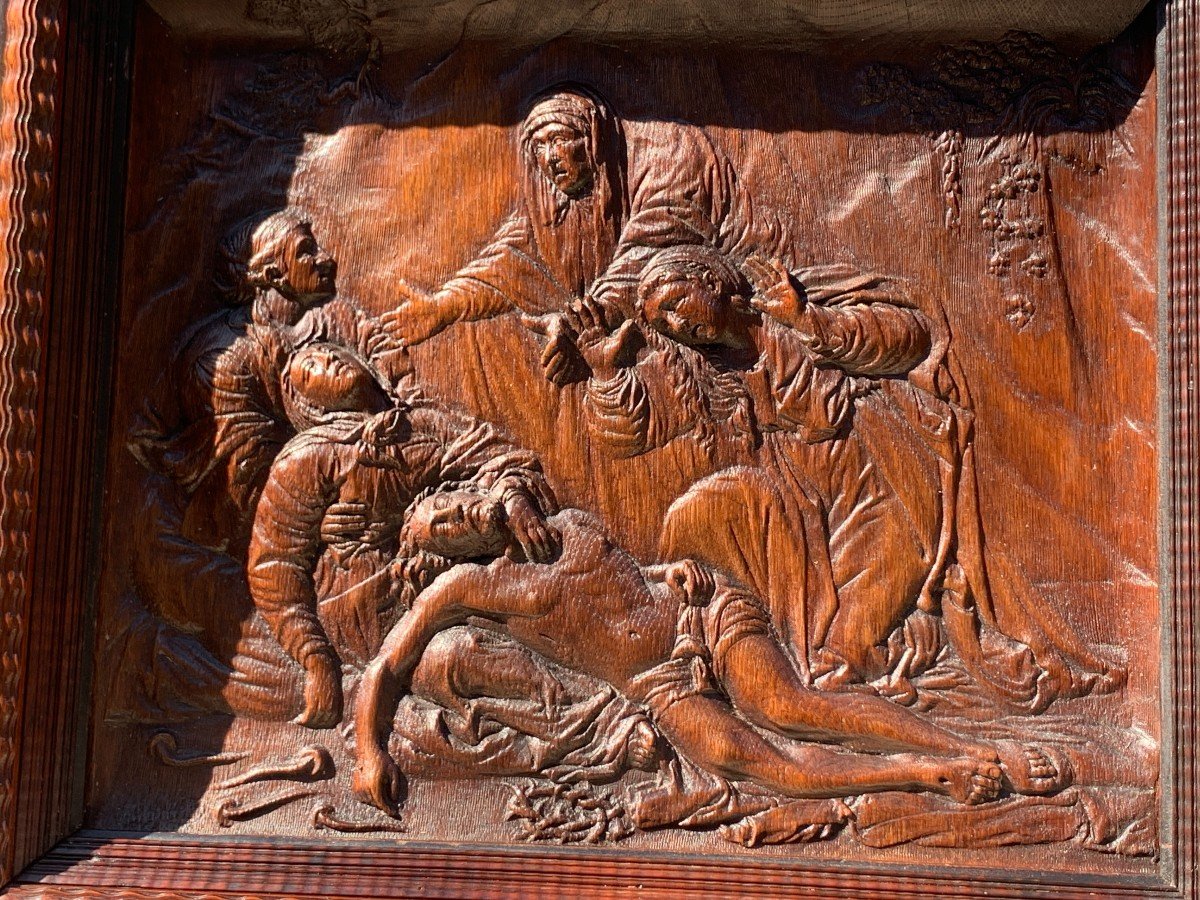
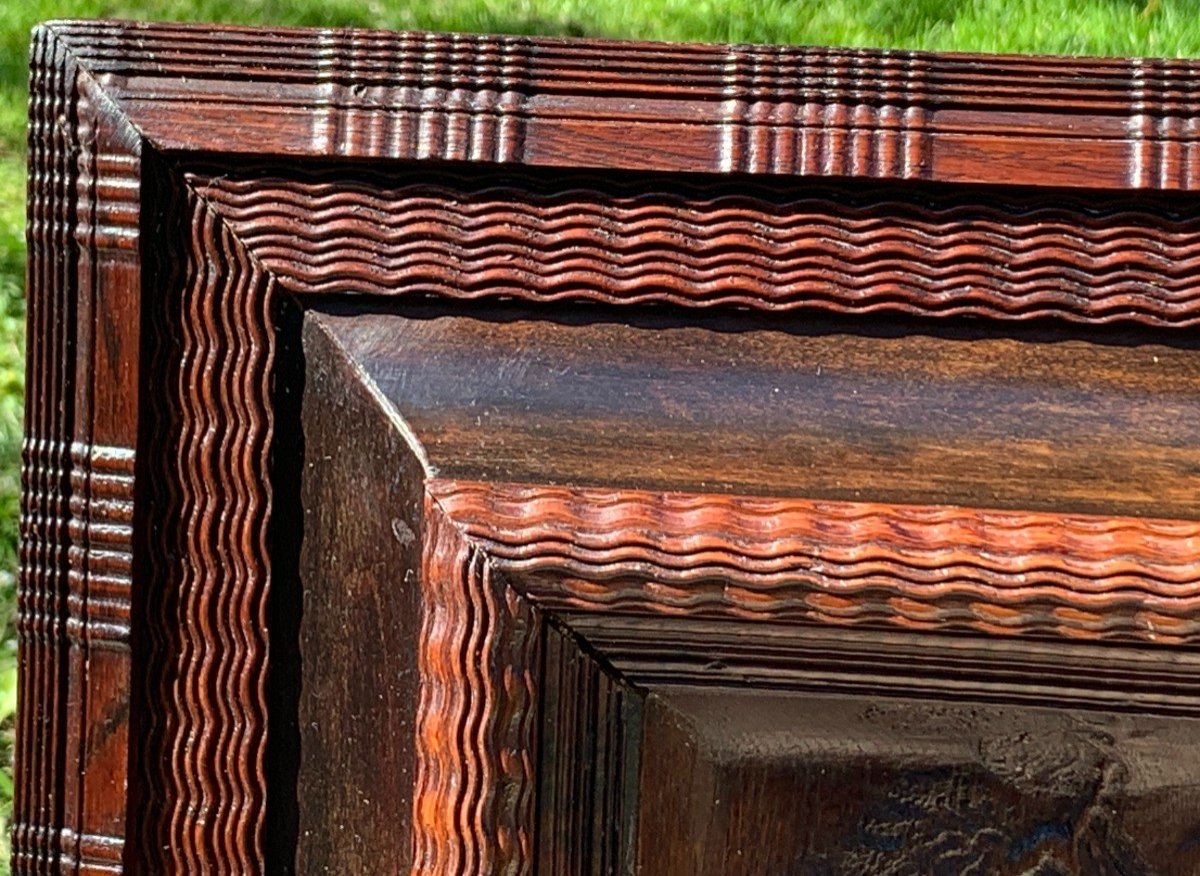
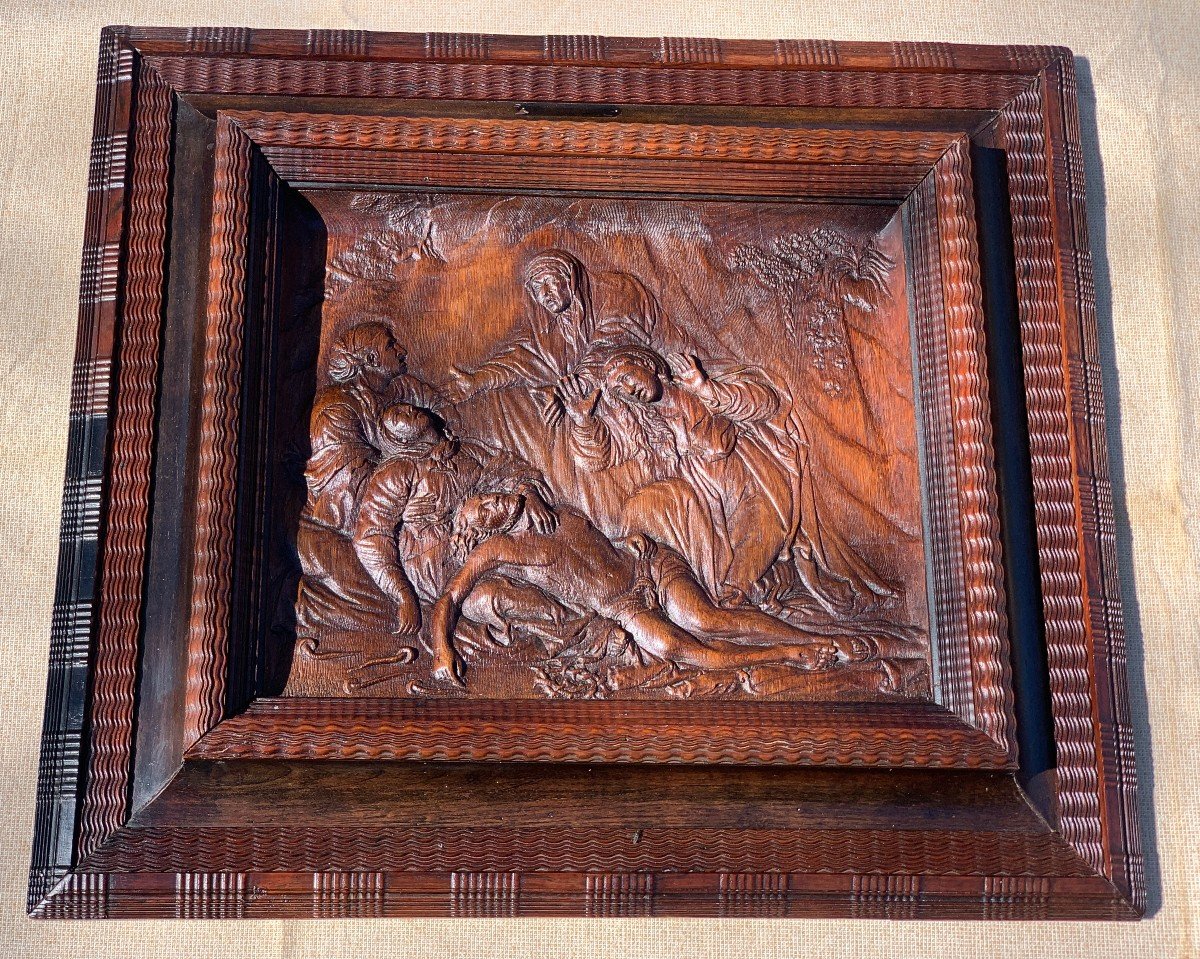
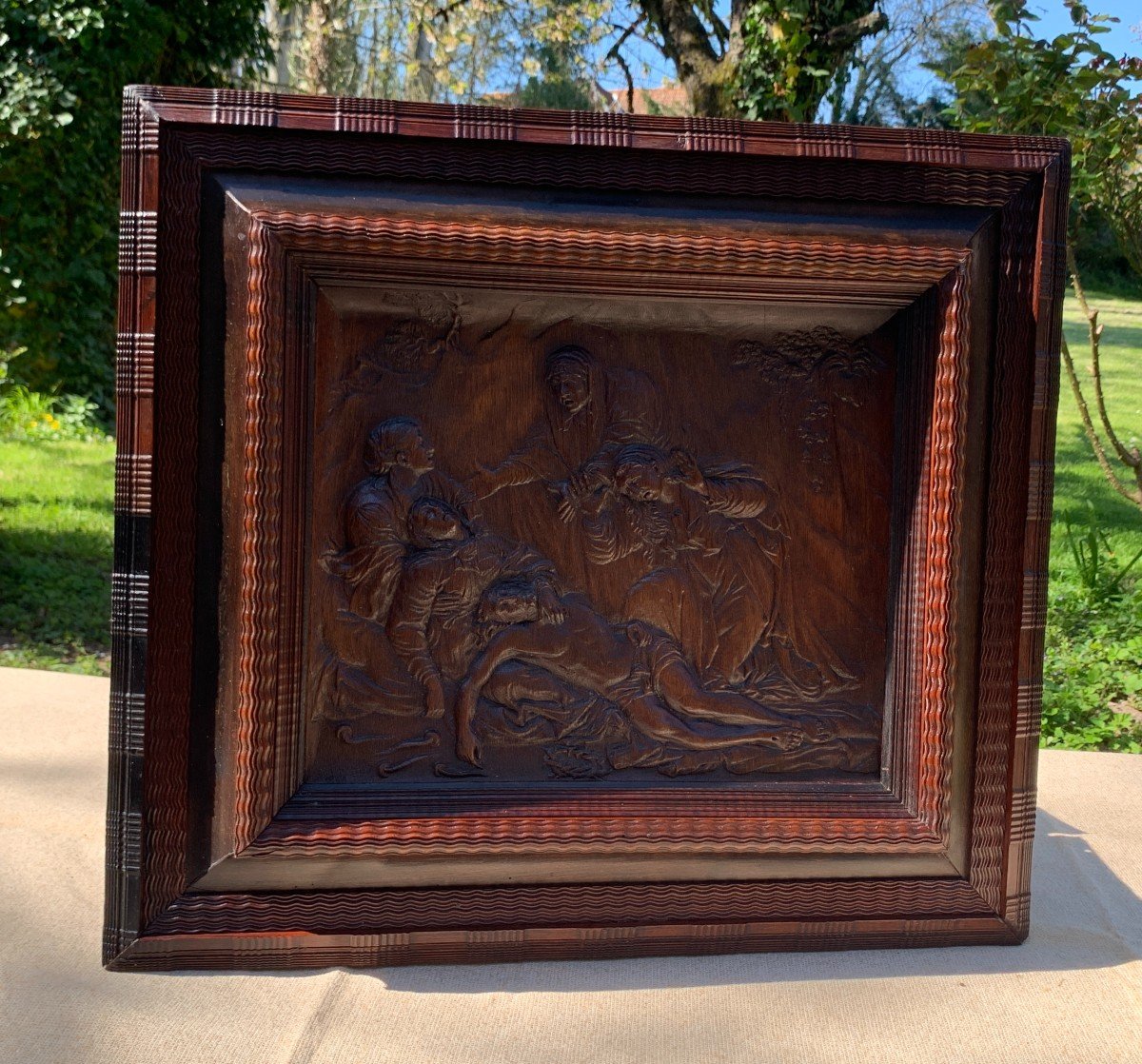
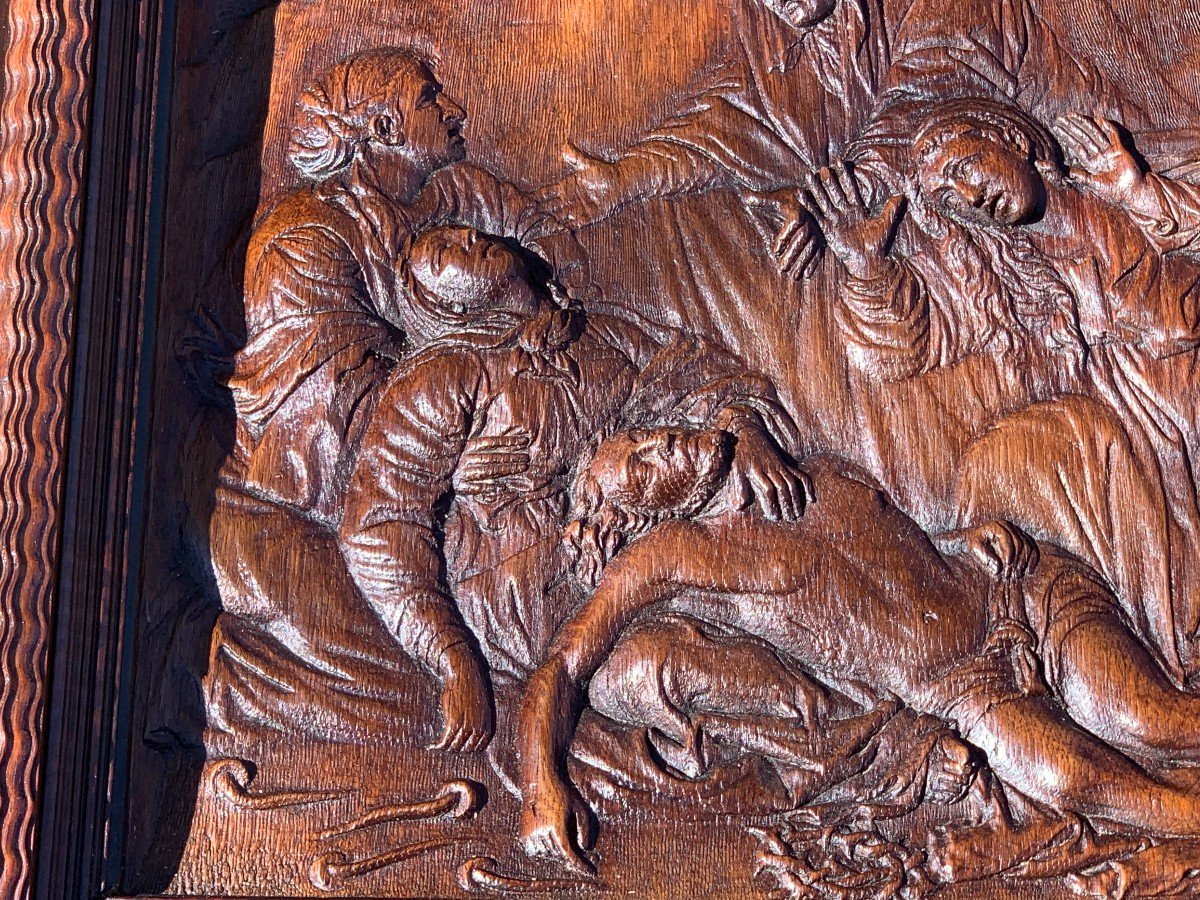
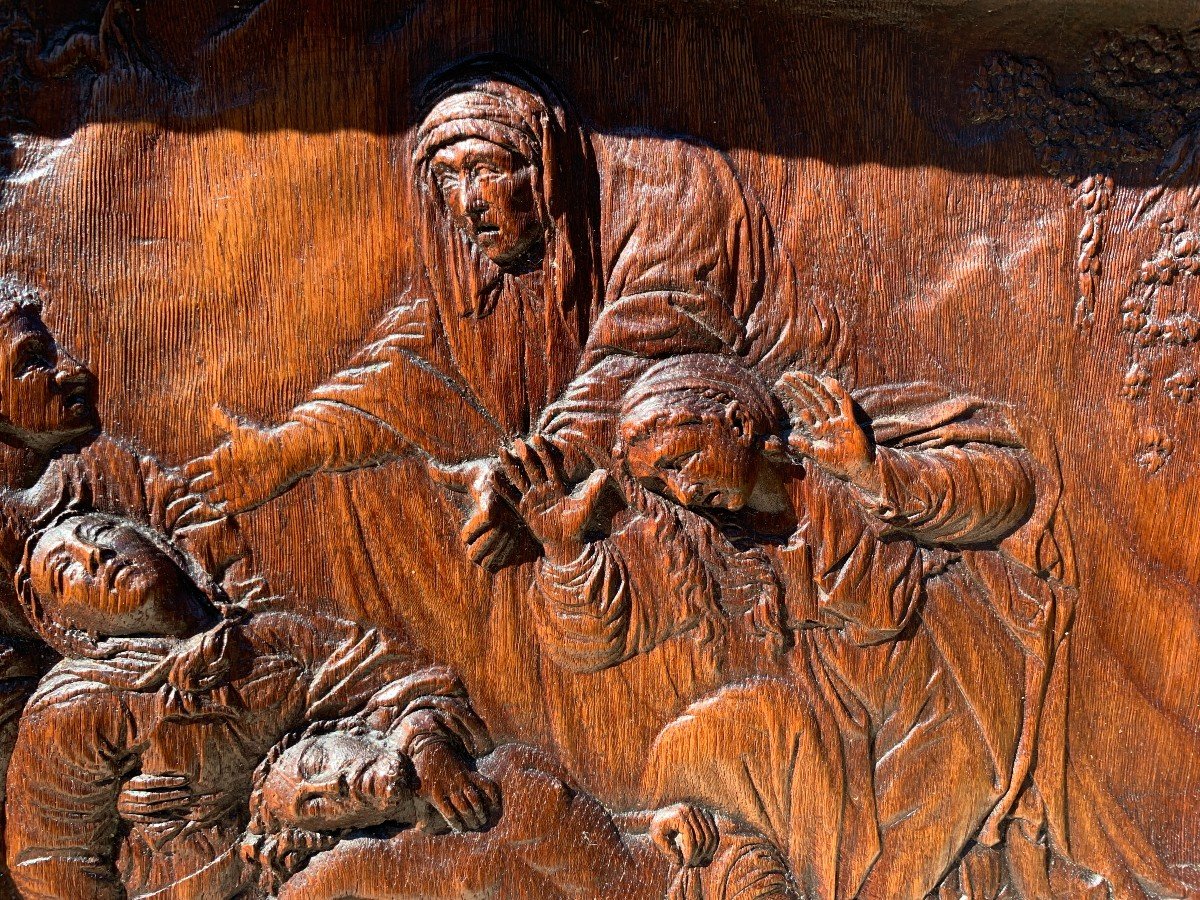
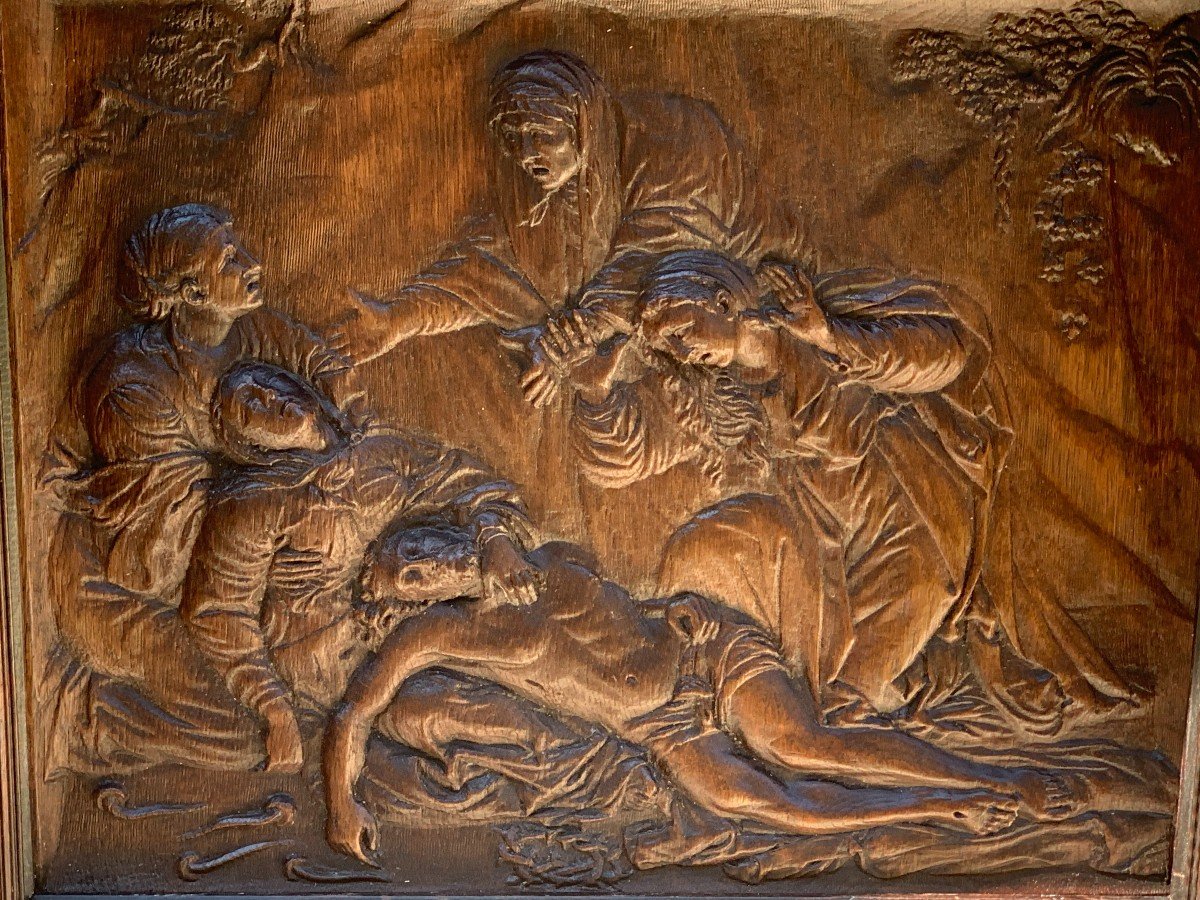
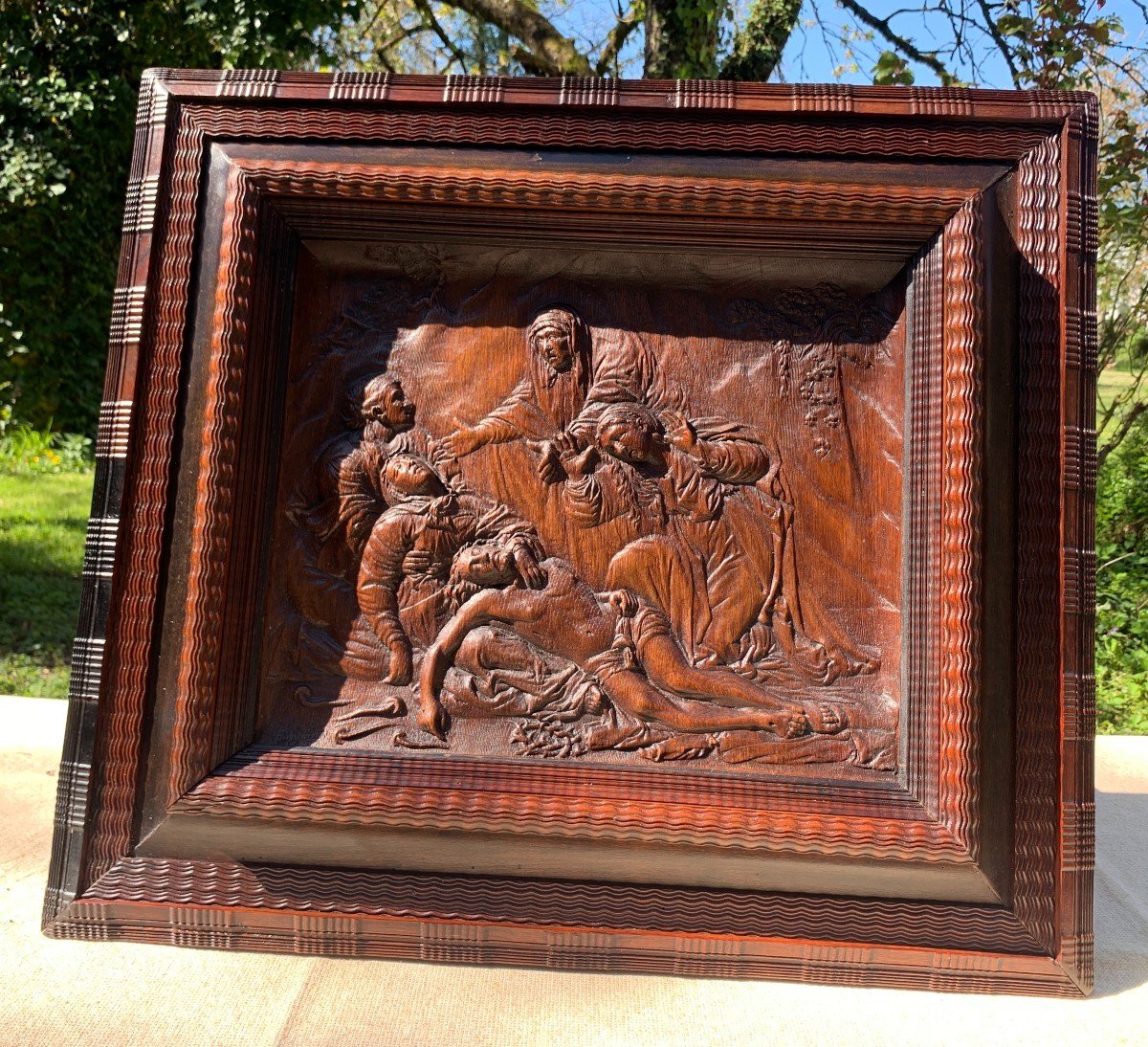
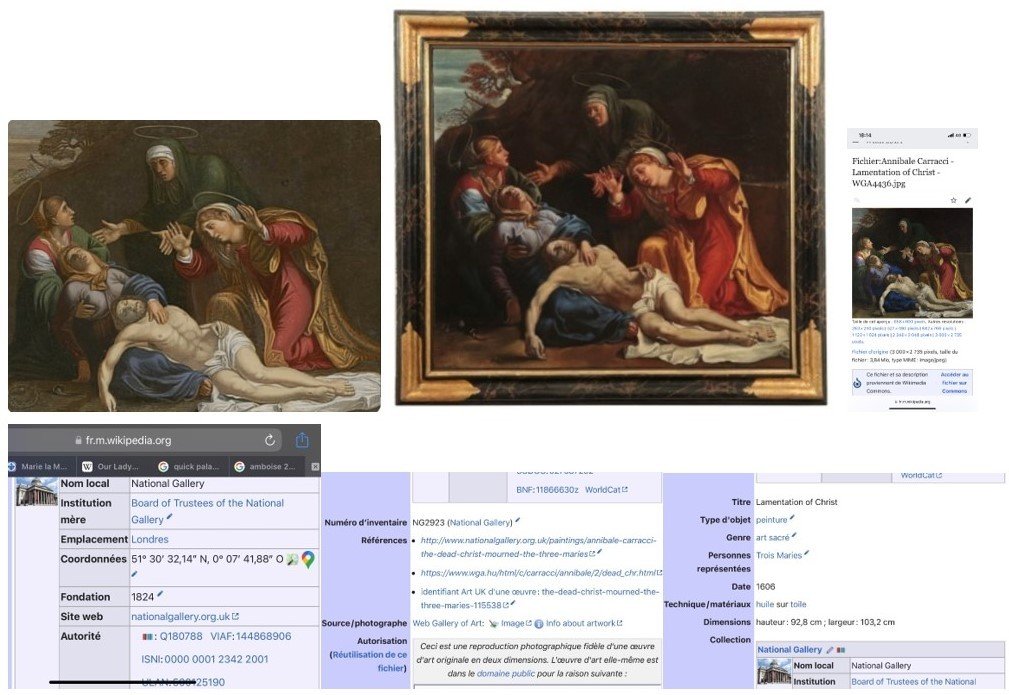
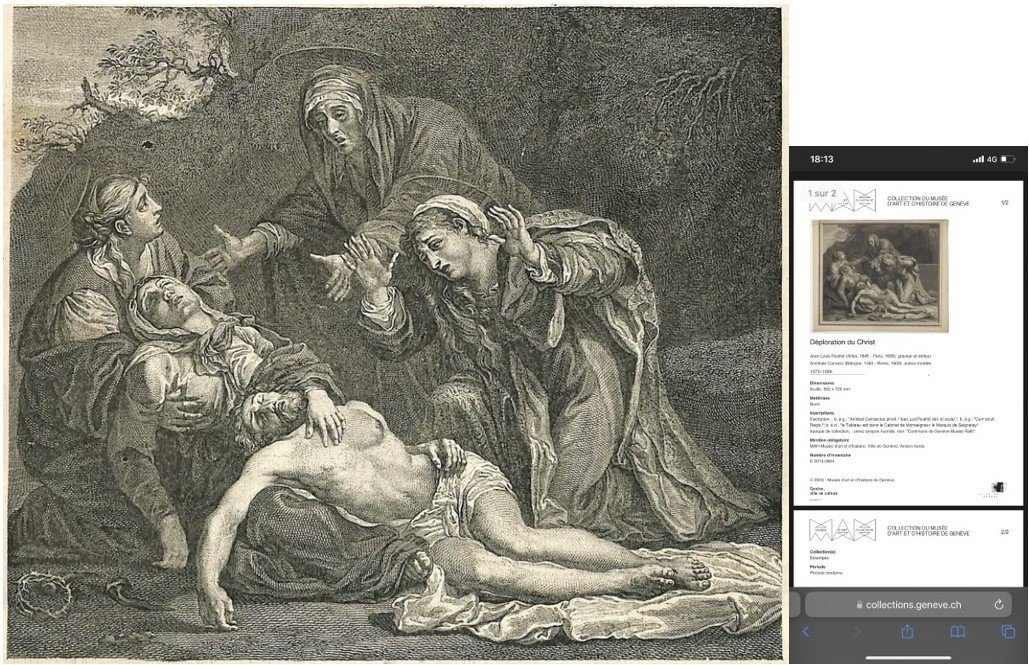














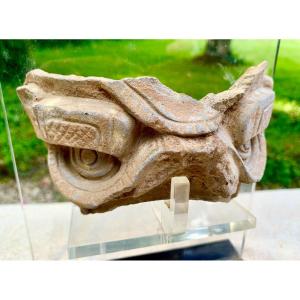
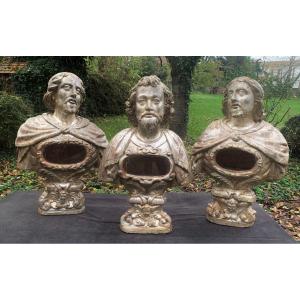
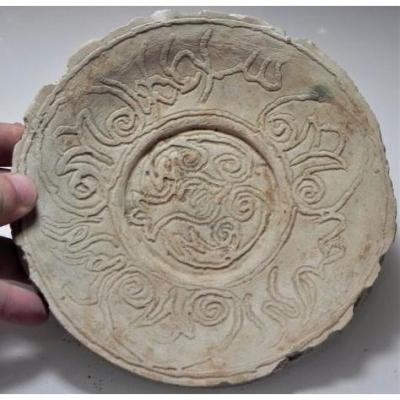





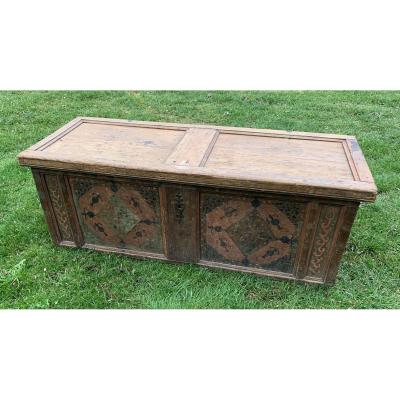
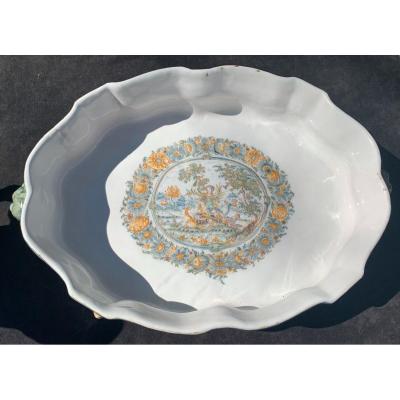

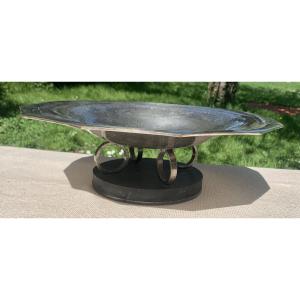

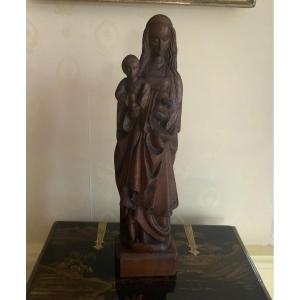


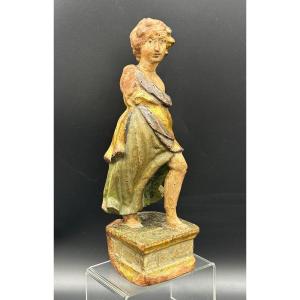



 Le Magazine de PROANTIC
Le Magazine de PROANTIC TRÉSORS Magazine
TRÉSORS Magazine Rivista Artiquariato
Rivista Artiquariato